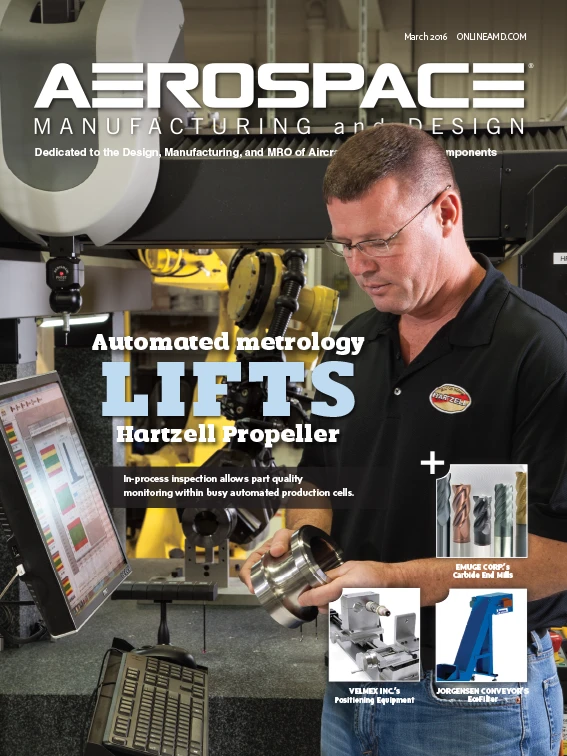
Modern CNC grinders are designed to minimize vibrations with advanced software that evaluates factors such as dynamic and static stiffness. Spindles, slides, ways, and other components are built to stringent specifications to increase rigidity and improve vibration. Despite machine design advancements, grinding is becoming more difficult for industries such as aerospace. Tolerances have tightened considerably and material removal rates (MMR) for high nickel alloys, ceramic matrix composites (CMC), and metal matrix composites (MMC) are pushing machine capabilities to the limits, increasing the probability of vibration.
Technology has also improved for vibration measurement tools, making small, portable, relatively inexpensive analysis systems more prevalent in shops and maintenance departments.
Vibration forms
Common forms of vibration on grinding machines tend to fall into two categories – force vibration and self-excited vibration. Force vibration includes wheel imbalances, damaged bearings, bad motors, or grinding wheel imbalances. Force vibration can be present even when the grinding wheel is not in contact with the workpiece. Self-excited vibration occurs only during grinding, due to grinding parameters, the process, and certain machine characteristics such as natural frequencies of the machine.

During grinding, undulations/waves can start to form on either the workpiece or the grinding wheel as fluctuating forces excite a natural frequency on the machine. The undulations continue to grow with each rotation of the wheel. This continues until the workpiece quality diminishes to the point that grinding needs to be stopped. Typically, the wheel is then dressed and the cycle repeats. Waves forming primarily on the wheel are said to be due to wheel-regenerative vibration, and waves forming primarily on the work are said to be due to work-regenerative vibration.
When the vibration amplitude becomes excessive, it can become detrimental to workpiece quality. The amount of vibration that would be considered excessive depends on the application. A precision cylindrical grinding operation may require displacement values below 0.03 mils (0.00003") whereas a cutoff operation at a steel mill could be greater than 1.00 mils (0.00100") peak-to-peak. Typically, acceptable vibration level is driven by workpiece tolerances, such as dimensional tolerance, surface finish, waviness, roundness, and undulations per revolution. The tighter the tolerances, the more the vibration needs to be minimized. Excessive vibration can also increase wheel wear, damage (burn) material, and cause early spindle bearing failure.
The grinding spindle bearings typically need to operate at high speeds while withstanding high loads and grinding forces. Any wear or damage to the bearing will transfer to the workpiece as chatter or poor finish quality. Depending on the severity of the operation, the spindle bearings may last for years with no issues, but other, more intense operations may require bearings to be repaired or replaced more frequently.
Determining the source
There are many potential sources for machine vibration and great care should be taken when determining the true source. This is especially important when planning machine maintenance and repairs. In some instances, thousands of dollars have been wasted repairing or replacing spindles, only to discover that the spindle was not the problem. Diagnosing vibration problems can be complicated and require advanced equipment and an experienced vibration analyst. Useful, basic vibration analyses can be completed by relatively inexperienced personnel using iPads.
Conclusion
Vibration monitoring of grinding machines can help reduce delays in production, product rejections, late deliveries, and increased manufacturing costs. It can also help to quickly identify the source of vibration. If you are responsible for keeping grinding machines running and making quality parts, consider vibration monitoring of your machines. The investment could save time, money, and headaches.
Norton | Saint-Gobain Abrasives
About the author: John Hagan is a corporate applications engineer at Norton | Saint-Gobain Abrasives and can be reached at john.s.hagan@saint-gobain.com.

Explore the March 2016 Issue
Check out more from this issue and find your next story to read.
Latest from Aerospace Manufacturing and Design
- Revitalizing the Defense Maritime Industrial Base with Blue Forge Alliance
- Safran Defense & Space opens US defense HQ
- Two miniature absolute encoders join US Digital’s lineup
- Lockheed Martin completes Orion for Artemis II
- Cylinder CMMs for complex symmetrical workpieces
- University of Oklahoma research fuels UAS development
- Motorized vision measuring system
- Everyone's talking tariffs






